We have been exploring patterns in Maths Week 2020. We created patterns using lines, and looked at the patterns and links between multiplication and division. Exploring the links and patterns helped us to create more complex calculations.
Perfect parabola

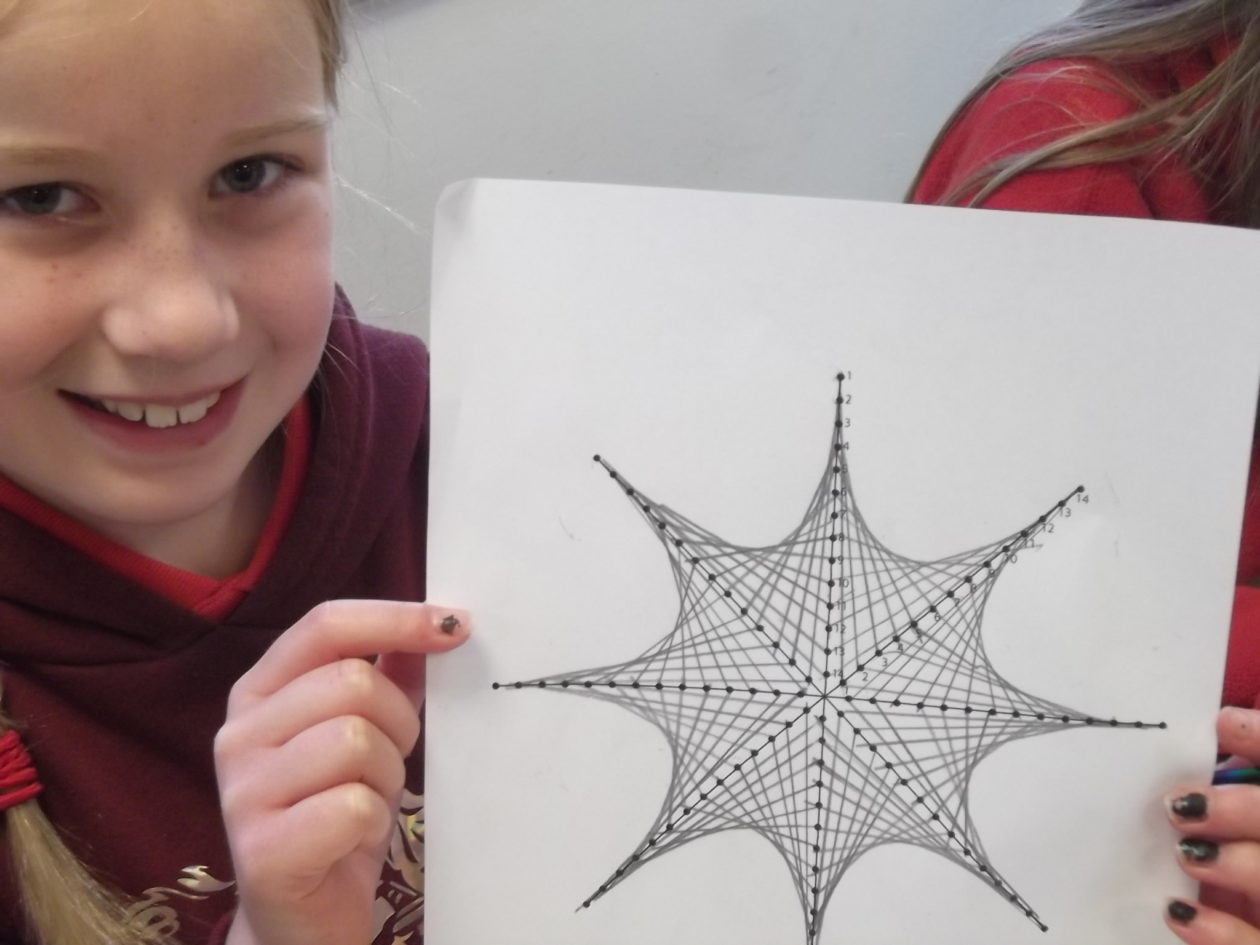
A parabola is a special type of bend in a semi circle (R.H). Parabolas make an upside down U, and you can predict the angles, which makes them important for satellites.
We made these part-parabola patterns using lines and rulers not curves! Some of us coloured them in like a checker board to make it look more 3D. We created parabolas in PE on the MUGA by throwing balls to each other, making them high enough to see the upside down U shape.
Amazing arrays
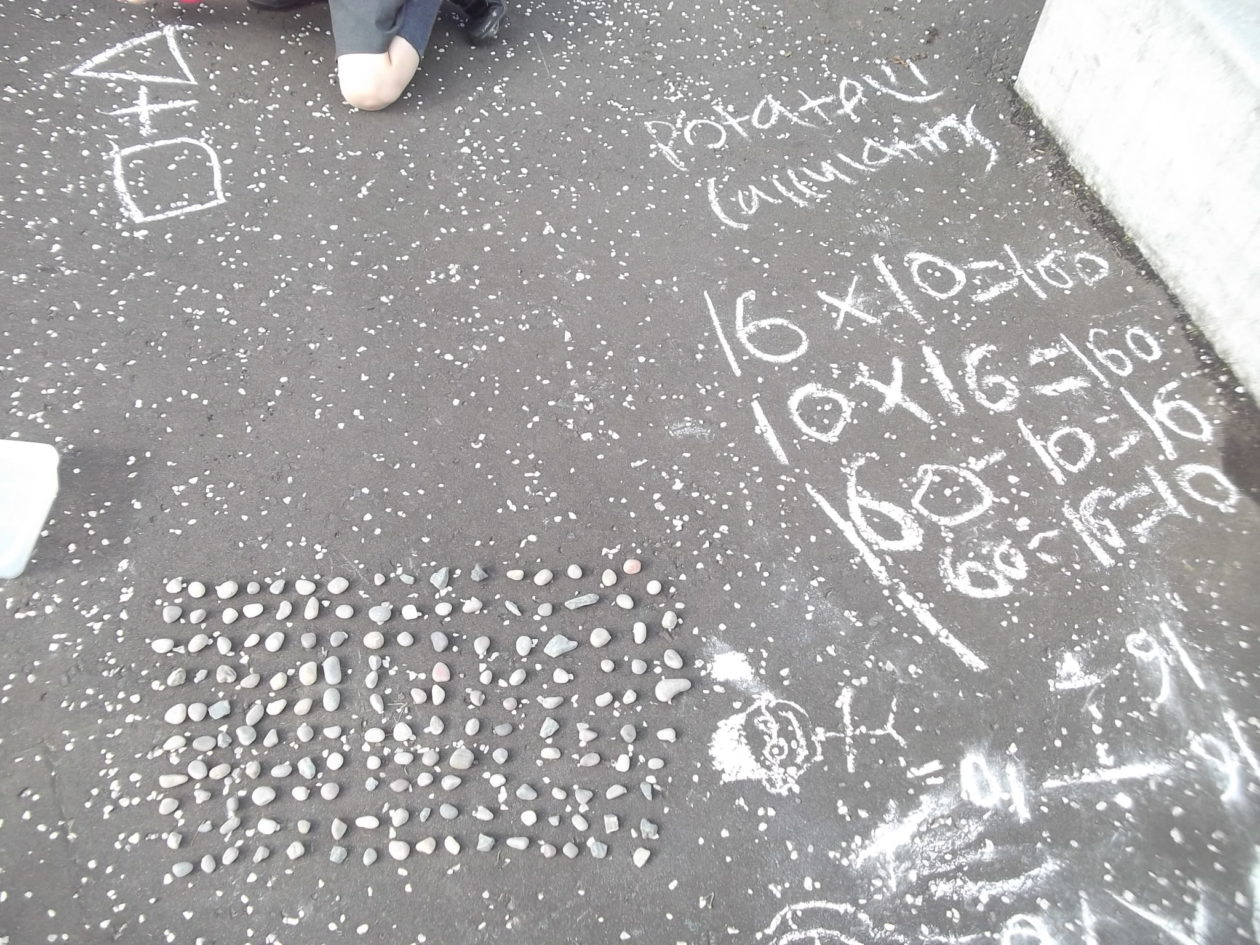
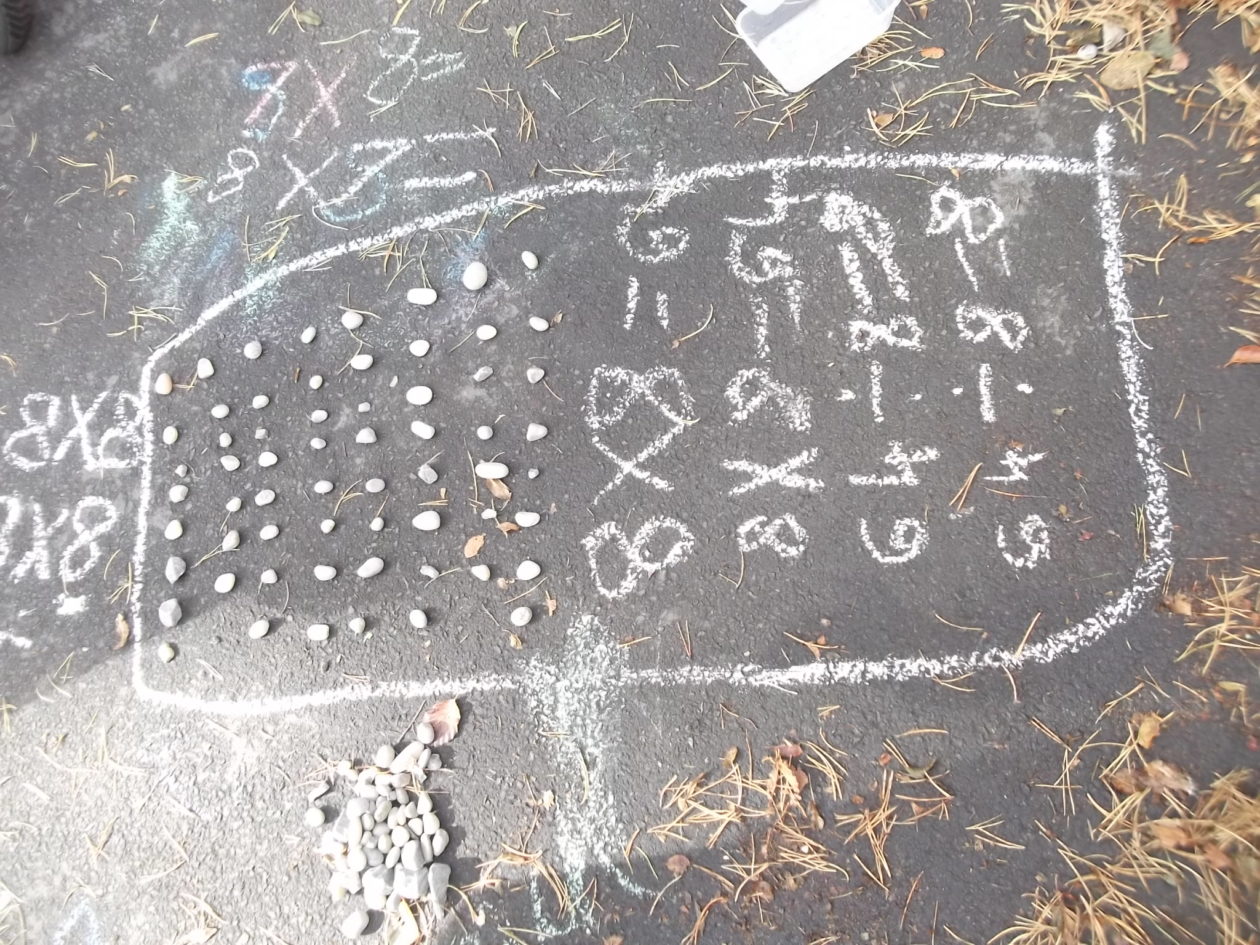
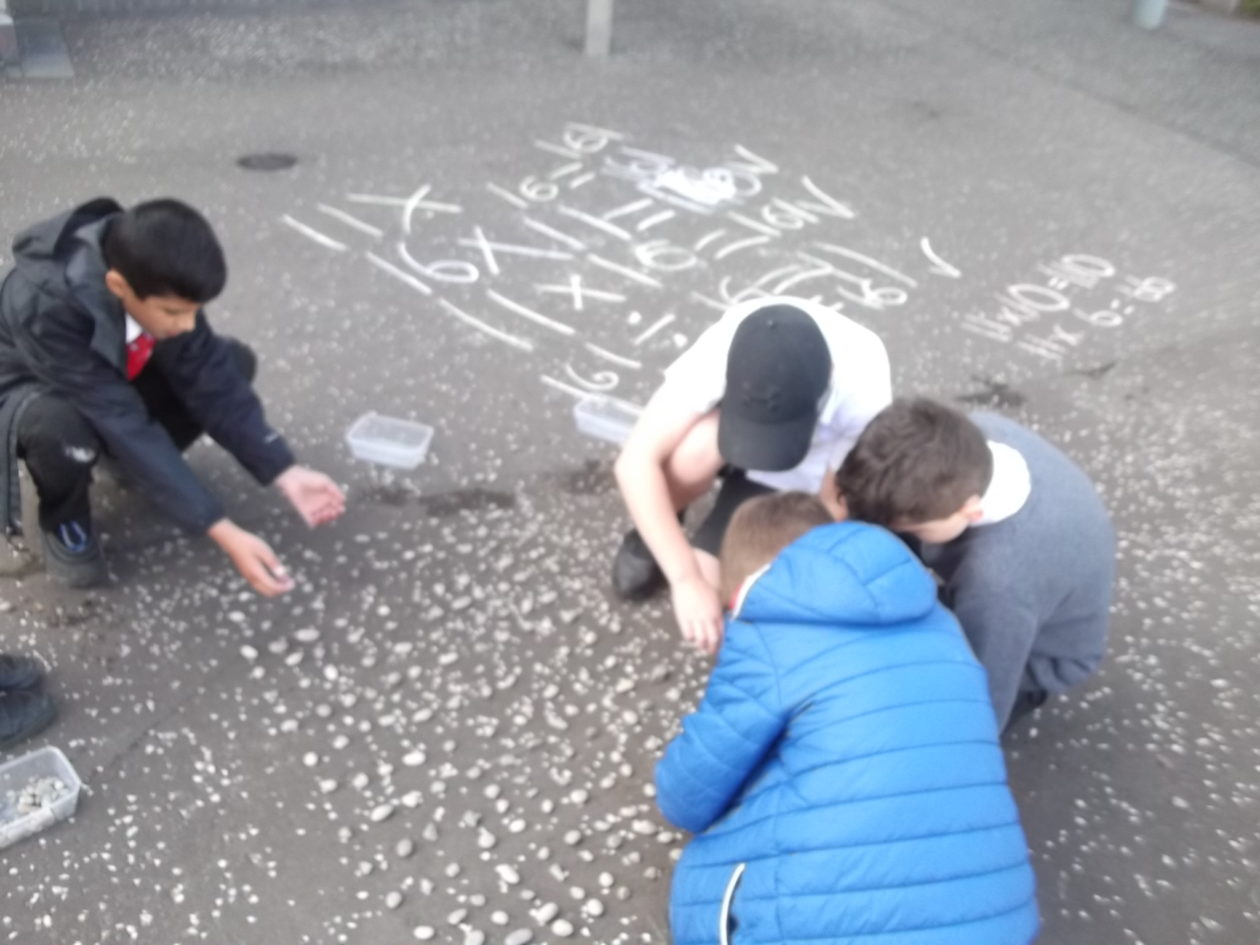
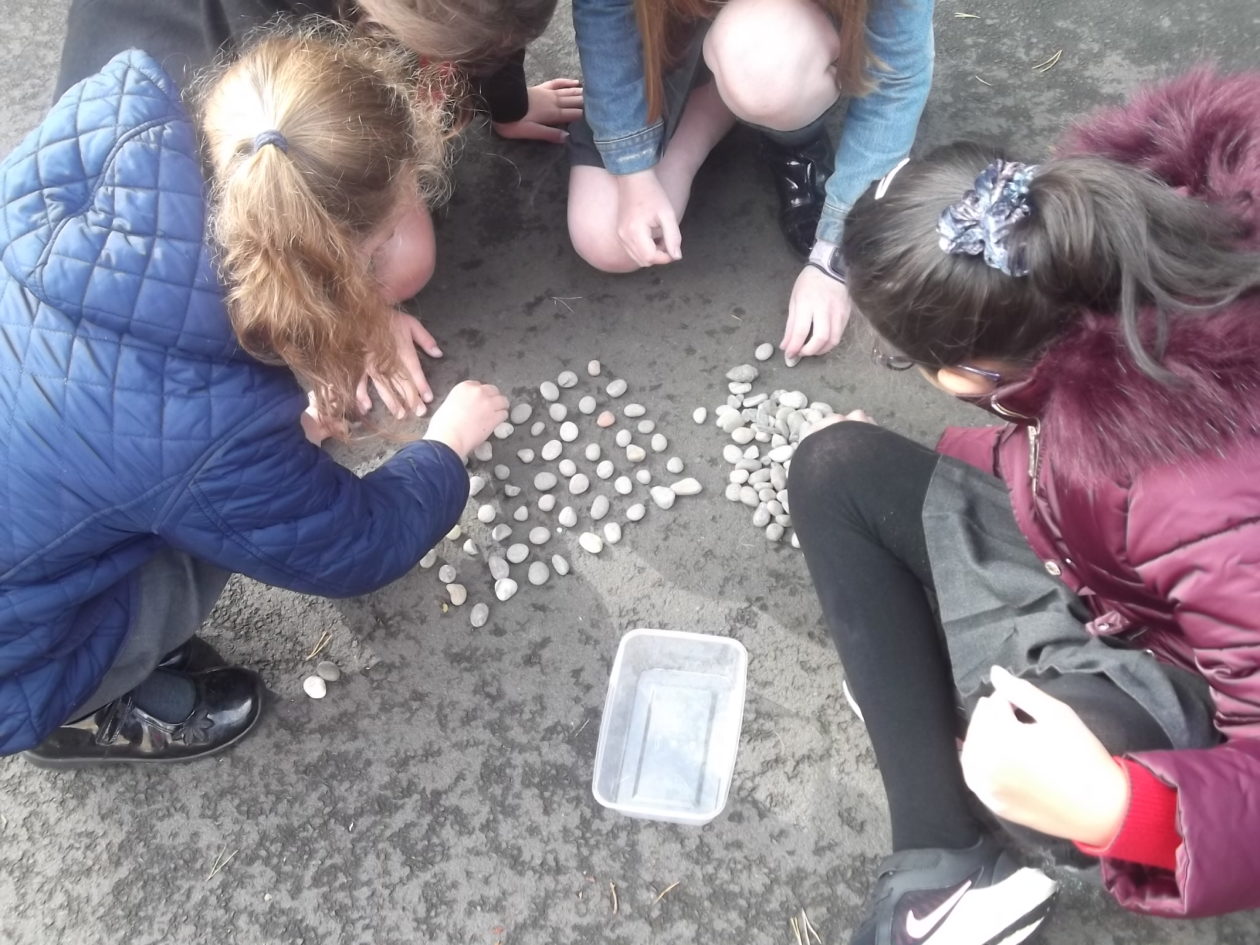
Arrays can help us with multiplication and division. We used pebbles in rows and columns to make the calculations. for example, 4 rows of 7 pebbles would make 28, and then show the division for that too. We wrote all the calculations we could make with the array next to it: 2 multiplication and 2 division. Making arrays helped us to do more complex multiplication and division, as you can see…
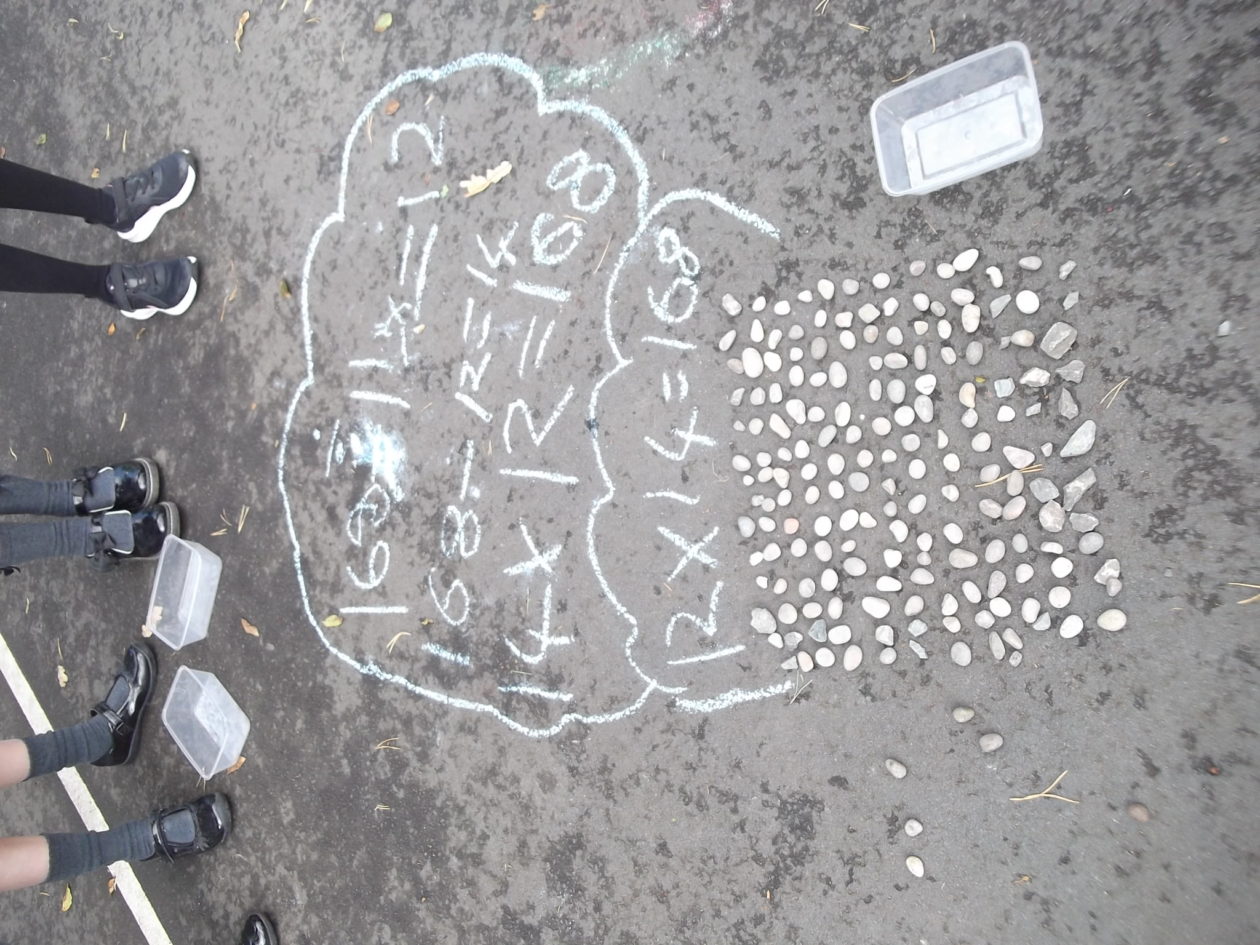
Marvellous multiplication pebbles
Through the week, we made multiplication stones. We used chalk pens to create dots and numbers for multiplication tables. We are going to use them to make calculations and to skip counting. We also added them into our fraction walls…
Fabulous fraction walls
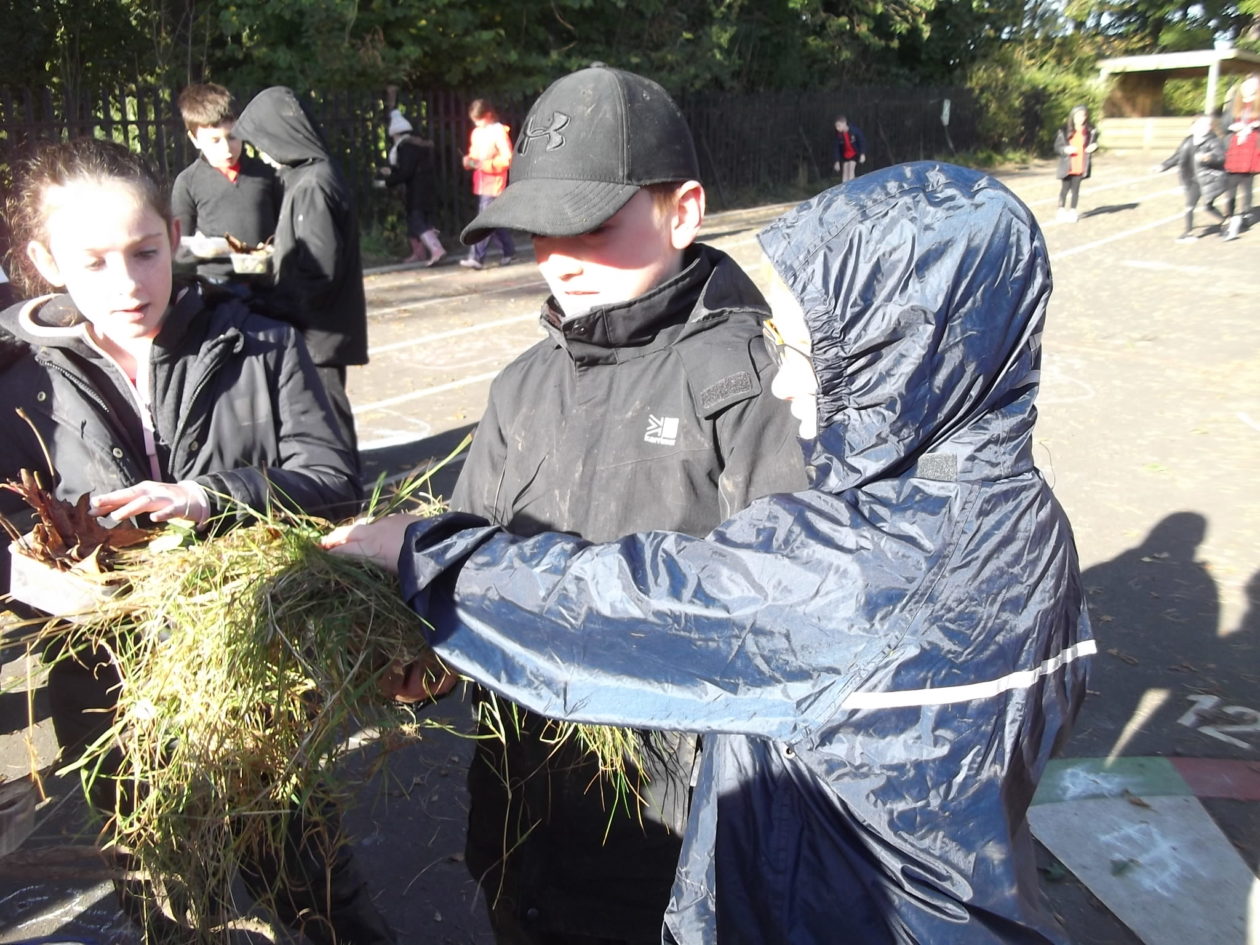
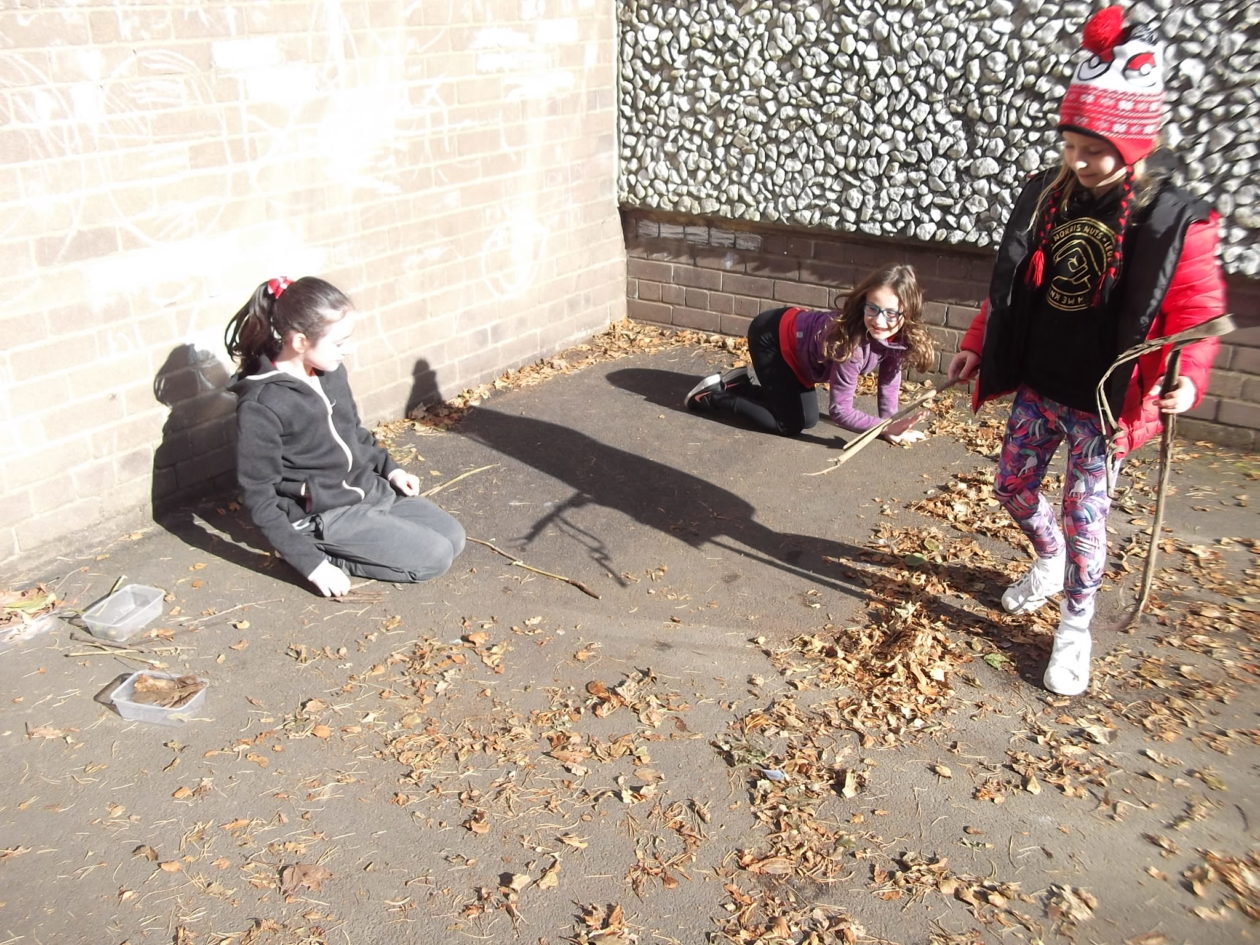
When we were at the woodland, we gathered some natural materials to help us make fraction walls. These showed us the patterns and links between fractions and multiplication and division. We created walls, some of us showed complex fractions, some equivalent fractions, and some showed division facts.
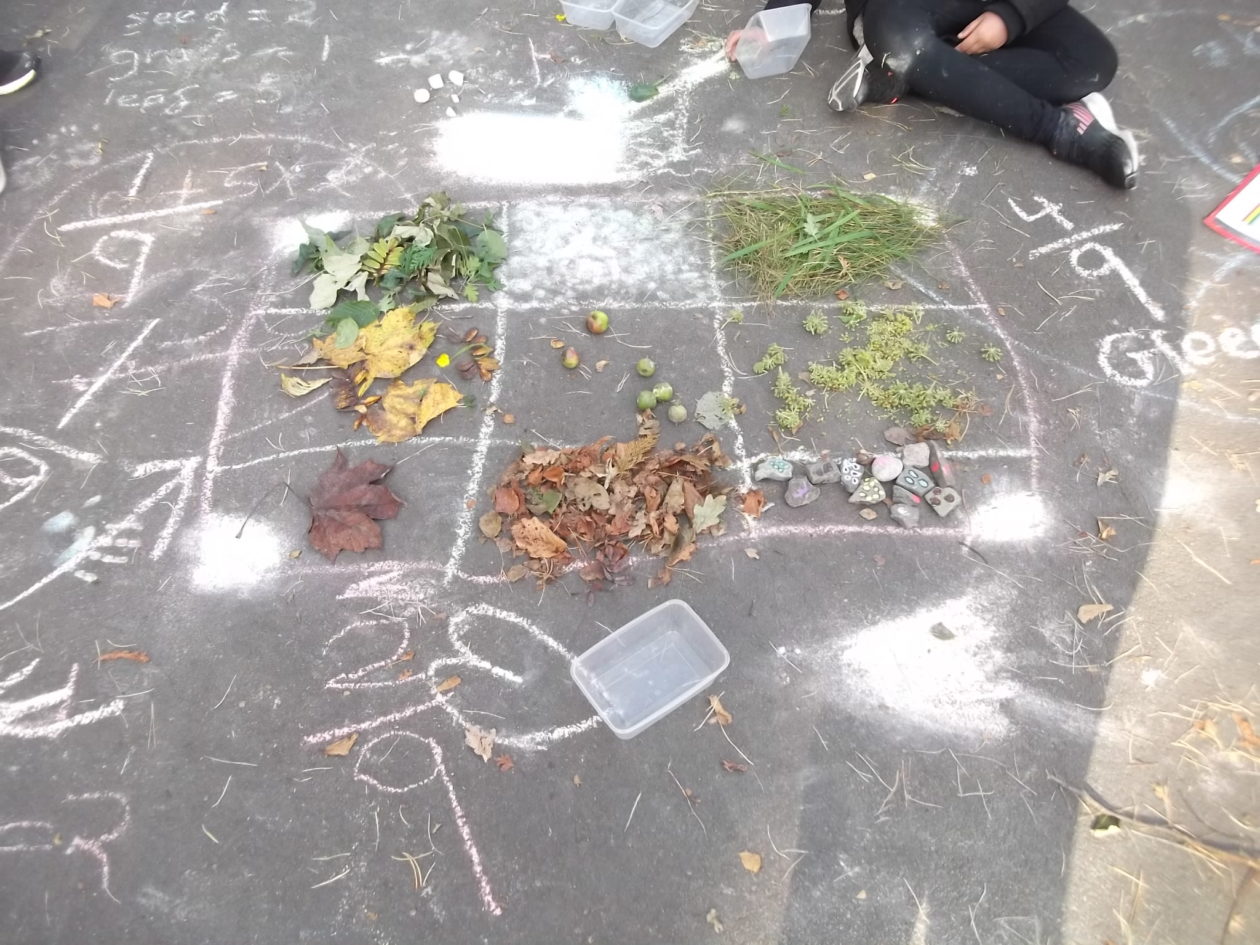
We used different colours to make our fractions. We divided our shape into ninths. 4 ninths were green in different ways, using leaves, apples, grass and parts of a tree.
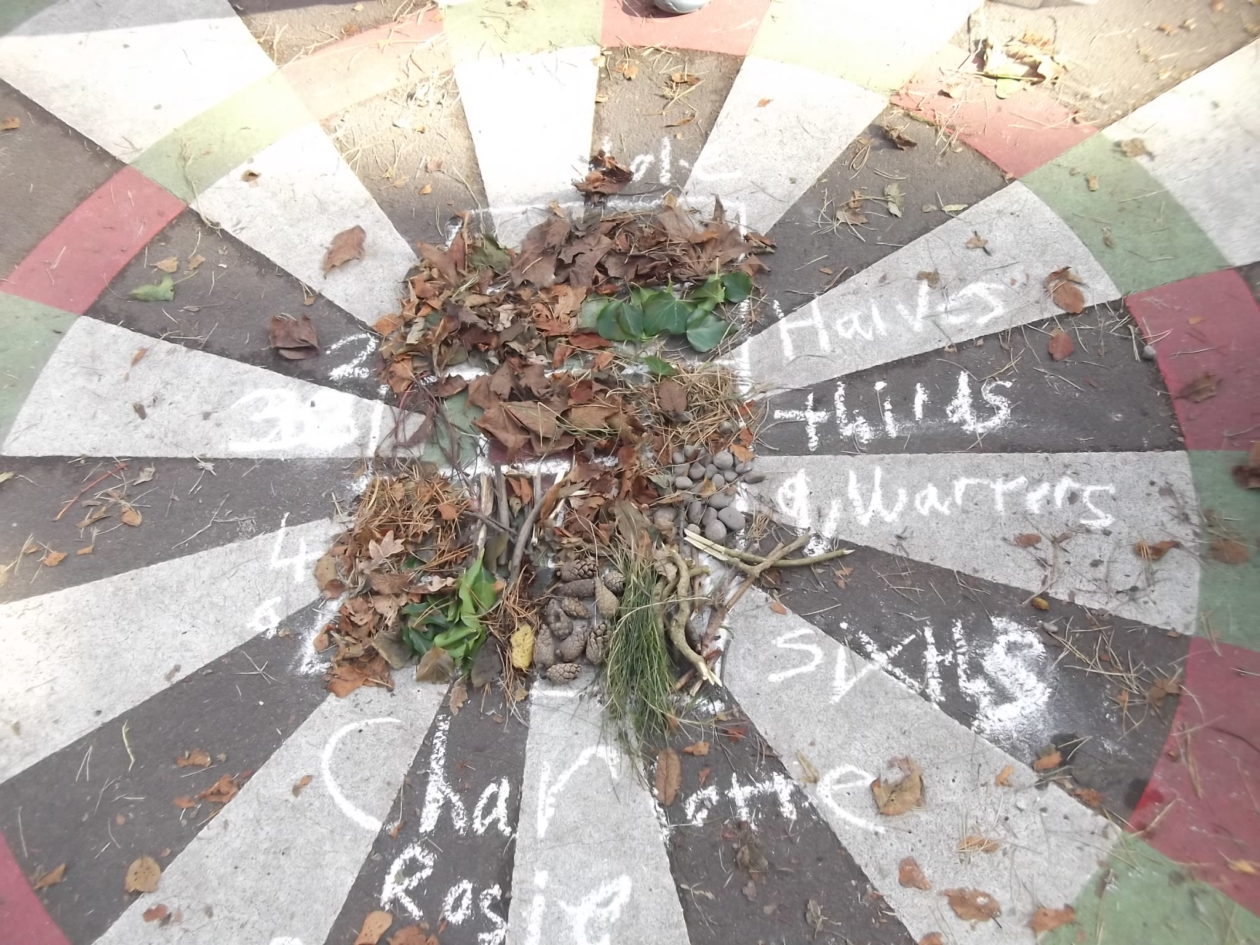
In our wall, the top is one whole and then halves, then thirds, then quarters, then sixths. We talked to Mrs Allan about equivalent fractions, that 3 sixths is the same as one half.
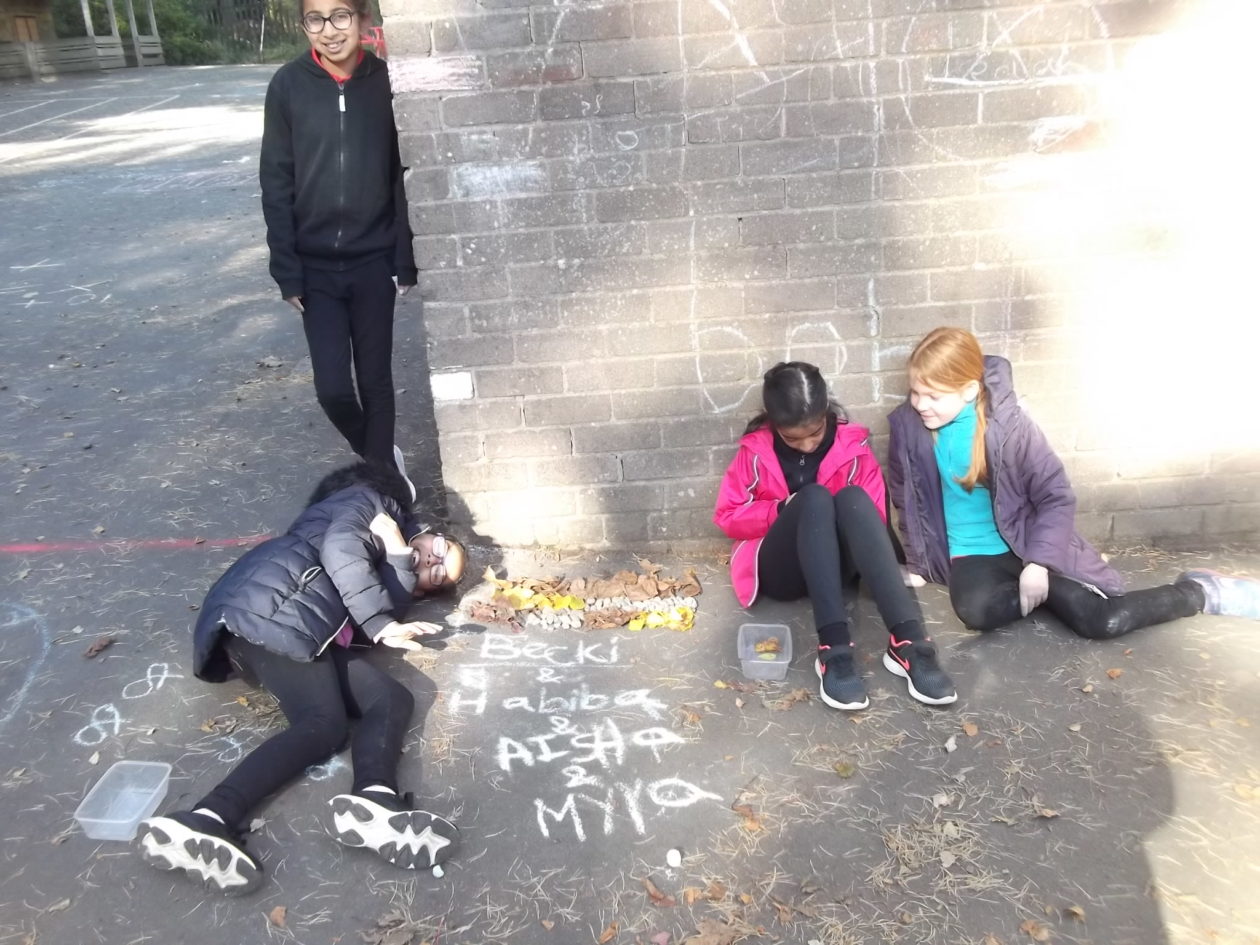
We used different colours of leaves and stones for our wall. We used one colour at the top of brown leaves, two colours in the middle and then four colours (red, yellow, and brown leaves and stones for quarters.
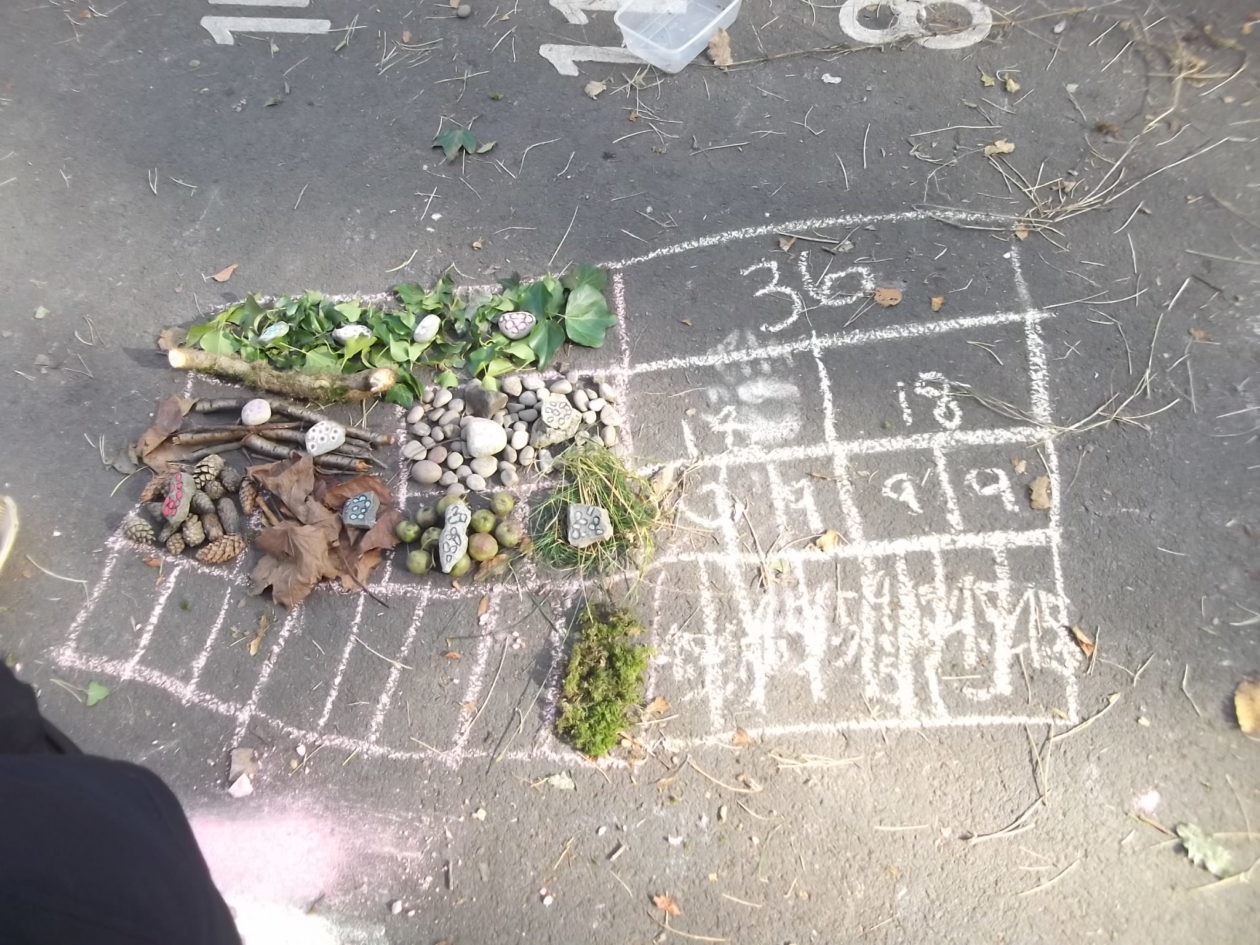
We found it difficult to gather all the resources. We used the multiplication pebbles on each part. On the top, we used 4 stones to make 36 (4 x 9), and then we divided in each half (2 x 9 twice) and then again (1 x 9 four times). when we divided the quarters again, it was 4.5!
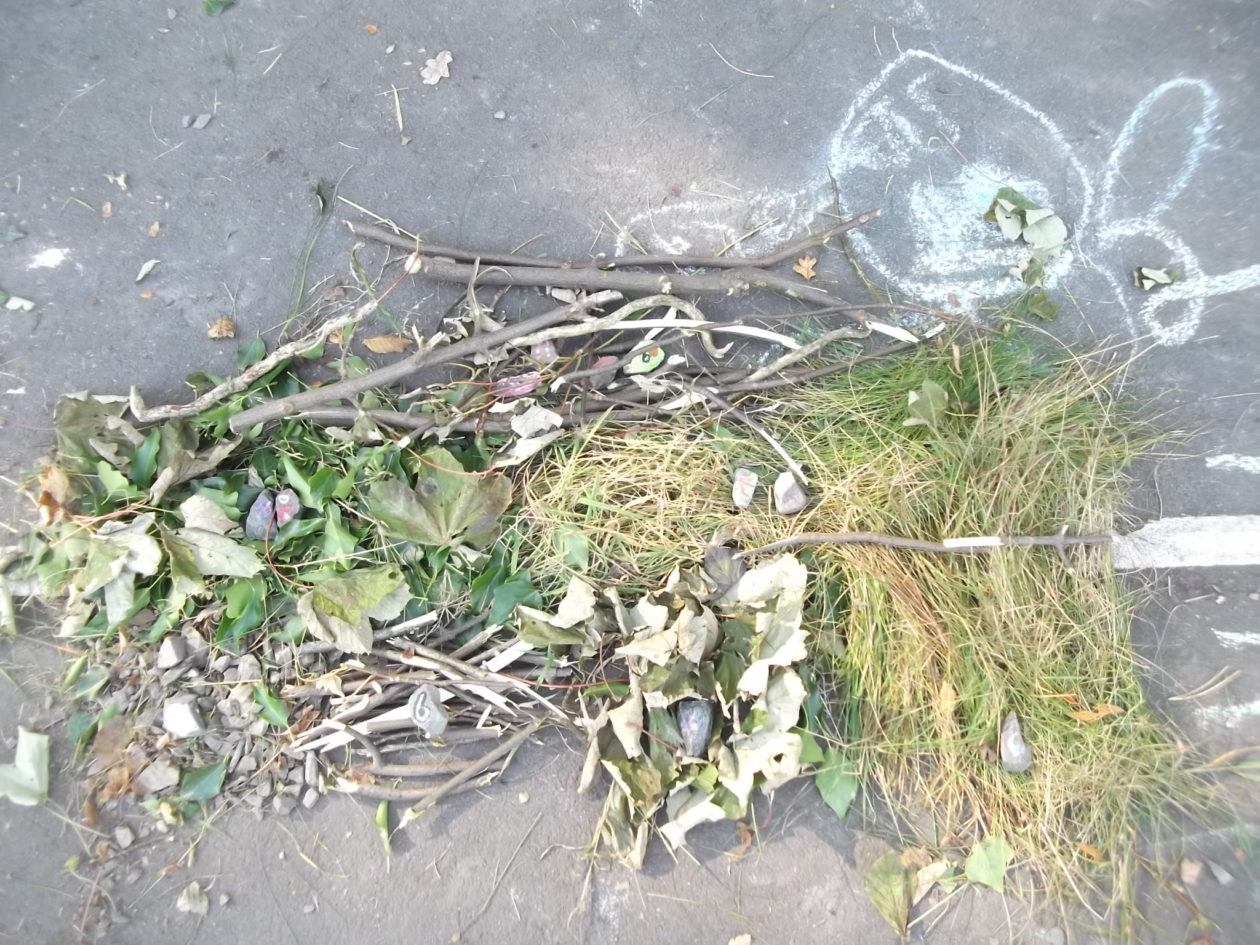
We used twigs for the top part and it was hard to snap the twigs. We wrote calculations using the multiplication pebbles at the side. The total that we had was 24 using the 6 times table stones. Every layer added up to the same amount because it was the same as the one whole at the top.
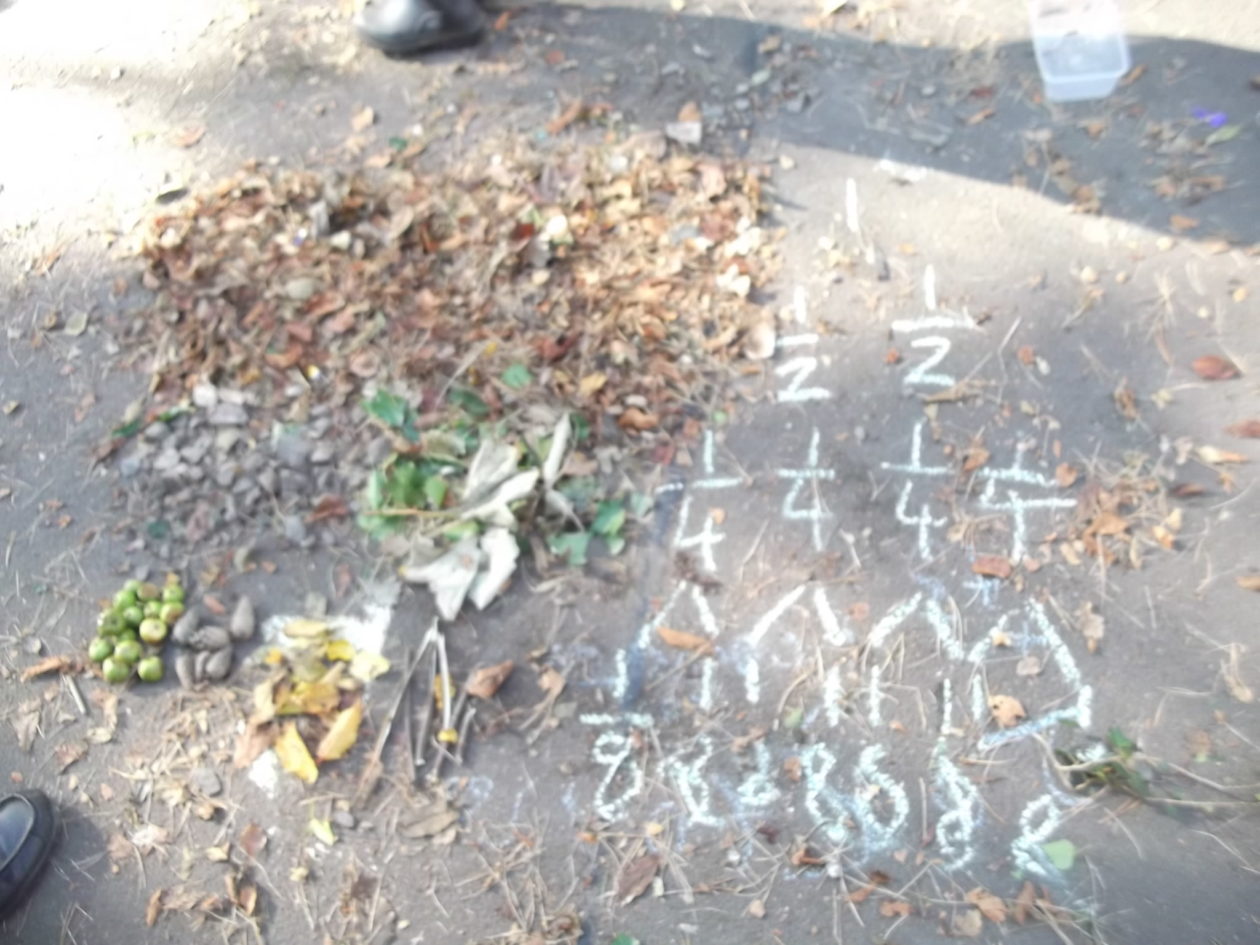
We were going to make our lines longer, but we changed it because we didn’t have enough resources. We talked about moving from halves to quarters and then we talked about eighths, but it was hard to show the eighths using the resources. We had a lot of different ideas!
